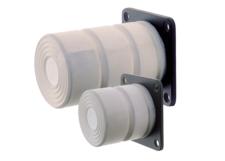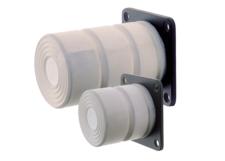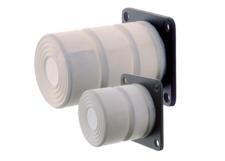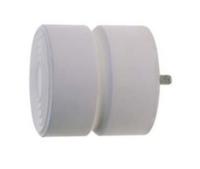Cellular buffers have a strong absorption capacity with long compression length. As a result they produce low limit forces and favorable deceleration values. Cellular buffers are made up of a spring body made of cellular Polyurethane-Elastomer with high structural stability. Their outstanding characteristic is their volume compressibility, which produces a low transverse elongation under pressure. Cellular buffers are resistant against aliphatic hydrocarbons, such as oils and greases as well as ozone, UV-radiation and aging. You can expect a general resistance in technical application. The cellular body is only limited resistant against hydraulic oil and degenerates when exposed to hot water and water vapor over a longer period. Cellular buffers are not resistant to strong acids and leaches. The operating temperature is between -20ºC and +80ºC (approx. -5°F to 175°F). Temporary temperature peaks of +100°C (212°F) are acceptable and do not harm the buffer. When exposed to –20°C the material becomes harder; this, however does not affect the consistency of the material.
Examples of application:
• Crane systems
• Storage and retrieval machines
• Smelter and rolling mill machines
• Handling technique
• Plant construction & engineering
• Hoist systems
• Conveyor, transport and gate systems that are equipped with form-locking drives (e.g. chain or toothed rack).
• Lift bumpers for vertically moved loads such as hoists and counter weights









Follow Us: